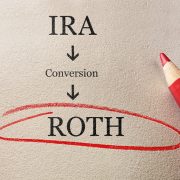Reducing Your Tax Burden with a Self-Directed Roth IRA
 It’s that time of year again…’Tax Time’! If the amount of taxes you have to pay on your real estate investments gives you a headache, we have a solution. Using your Self-Directed Roth IRA to hold your real estate investments allows your earnings to grow tax-free forever! The recent changes made to Roth IRA rules have removed funding restrictions, and now allow everyone to fund a Roth IRA, regardless of income and/or tax filing status.
It’s that time of year again…’Tax Time’! If the amount of taxes you have to pay on your real estate investments gives you a headache, we have a solution. Using your Self-Directed Roth IRA to hold your real estate investments allows your earnings to grow tax-free forever! The recent changes made to Roth IRA rules have removed funding restrictions, and now allow everyone to fund a Roth IRA, regardless of income and/or tax filing status.
How Roth IRAs Work
Roth IRAs are funded with assets that have already been taxed. As a result, distributions taken from a Roth IRA are tax-free, providing certain requirements have been met. In general, a Roth IRA distribution is tax-free once you have funded a Roth IRA for at least five years, and:
- You are age 59½ or older when the distribution is made,
- The distribution is taken by your beneficiaries after your death,
- The distribution is taken for first time homebuyer purposes, which is subject to a lifetime dollar limit of $10,000, or
- You are disabled, as defined by the IRS, when the distribution is made.
Roth IRA Funding Options
If you are considering funding a Self-Directed Roth IRA, you have several options from which to choose, some of which have limitations based on eligibility for withdrawals. The funding options are as follows:
- Regular Roth IRA Contributions: You can make a regular Roth IRA contribution of up to 100% of your compensation received for the year, subject to a dollar limit of up to $5,500, or $6,500 if you are at least age 50 by the end of the year. In order to use this option, your modified adjusted gross income (MAGI) must not exceed the following amount:
- $188,000 if your tax filing status is ‘Married filing jointly’. If your MAGI is between $178,000 and $188,000, you can contribute a percentage of the contribution limit provided above.
- $127,000 if your tax filing status is ‘Single’. If your MAGI is between $112,000 and $127,000, you can contribute a percentage of the contribution limit provided above.
- $10,000 if your tax filing status is ‘Married filing separately. If your MAGI is between $-0- and $10,000, you can contribute a percentage of the contribution limit provided above.
In order to use this option, you must receive taxable compensation for the year, such as salary, commissions, and income from self employment.
- Conversions and Rollovers: You can move assets from an existing retirement account to your Roth IRA. These include:
- Conversions from Traditional, SEP and SIMPLE IRAs. If the account is a SIMPLE IRA, you must wait until it has been at least 2-years since it was first funded before initiating the conversion.
- Rollovers from pension, 401(k), 403(b) and governmental 457(b) plans, including Roth accounts under these plans. In order to rollover amounts from these plans to your Roth IRA, you must first meet the plan’s requirements for making withdrawals.
We can help you to determine if you are eligible to make withdrawals from your accounts under these plans.
Notes:
- Unlike making regular Roth IRA contributions, there is no MAGI limit or income requirement for conversions and rollovers to Roth IRAs.
- Any pre-tax balance in the account from which the assets are taken will be included in your taxable income for the year.






